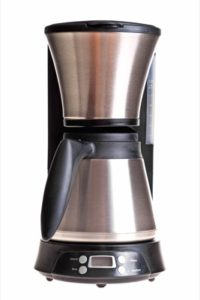
 One of the questions we are asked most often at Camano Island Coffee Roasters is: “How do I brew the best coffee in my coffee maker?”. This series is designed to assist you in brewing the perfect cup of coffee at home. When you know the optimal way of how to brew coffee at home and couple that with the top 1% of the world’s coffee, you’ll have a coffee experience akin to no other!
One of the questions we are asked most often at Camano Island Coffee Roasters is: “How do I brew the best coffee in my coffee maker?”. This series is designed to assist you in brewing the perfect cup of coffee at home. When you know the optimal way of how to brew coffee at home and couple that with the top 1% of the world’s coffee, you’ll have a coffee experience akin to no other!
How to Brew Coffee in a Drip Maker
For many, brewing drip coffee at home is the only way to enjoy their morning beverage. A drip coffee maker offers many conveniences such as ease of use, ease of cleaning, automated brewing, and a holding container for the coffee when it’s finished brewing. There are many ways to brew your coffee and a lot of them can negatively affect the flavor of the coffee itself. Our goal is to help you know exactly how to make the best coffee at home.

– The coffee you choose is imperative: When you purchase your beans, the quality of the coffee you buy is absolutely crucial to the flavor. This is true of every means of brewing coffee. Also, be sure to have fresh coffee as that is a major, key component.
– How to grind your coffee for a drip coffee maker: If you have a drip maker that has a “cone” shaped filter (paper or gold cone), you’ll want to grind your coffee a little finer than if you have a “flat bottom” filter. On a blade grinder, keep the grinder upright and hold down the grind button for 10 seconds if grinding for a flat filter or 12 seconds if grinding for a cone filter. If you have a burr grinder (or have the coffee pre-ground for you), you’ll want to set the grind on a #6 for a flat filter or a #4 for a cone filter.

– How much coffee to use: When the correct amount of grounds are used and the coffee is brewed right, the flavor is optimal and full. We recommend one to two level tablespoons per 6oz cup. Be careful you don’t brew your coffee too weak as it will pull out negative characteristics.
– The water (important): The water you use is the second most crucial step to having great tasting coffee (just after the coffee itself). Use filtered water or even bottled water. Be sure it’s cold! Also, DO NOT use distilled or softened water.

– Pre-wet the grounds: This is a fun trick many don’t know. If you have an insta-hot or can quickly heat up a very small amount of water, sprinkle no more than an ounce of water on your grounds before you close up your coffee brewer and start the brewing process. This begins the extraction and starts pulling the flavor to the surface of the grounds. When the brewing starts, it will have a head-start on the extraction.
– Other details (your coffee maker controls): Your coffee maker should keep a constant temperature of around 200?F in order to ensure optimal brewing temperature. This is useful to know if you’re brewing via pour-over. If you’re coffee is generally cool when it comes out of your maker, it may be time for a new machine. A drip maker should also take only 5 – 7 minutes to brew.
– Last: Enjoy it Right Away: Nothing ruins your coffee experience like cooled off coffee. When you’re looking forward to a hot cup of coffee to wake you up in the morning or relax your mind in the evening, you want fresh beans, freshly ground, and a fresh brewed cup in your hand. Reheating coffee will never revive that optimal just-after-brewing flavor.
In conclusion, brewing great tasting coffee at home is really a matter of the attention you pay to the details… yet it’s really easy to do. Many coffee “experts” will downplay the flavor of a drip brewer for many reasons. In reality though, a drip coffee maker can make a killer cup of coffee with the right beans, water and grind – if you understand how to brew coffee.
Source | NCAA Brewing Guide (combined with some of our own expertise)

thank you for the information
Thank you. This info is invaluable. Many sites assume this common knowledge is already part of the reader’s experience.
It is not!